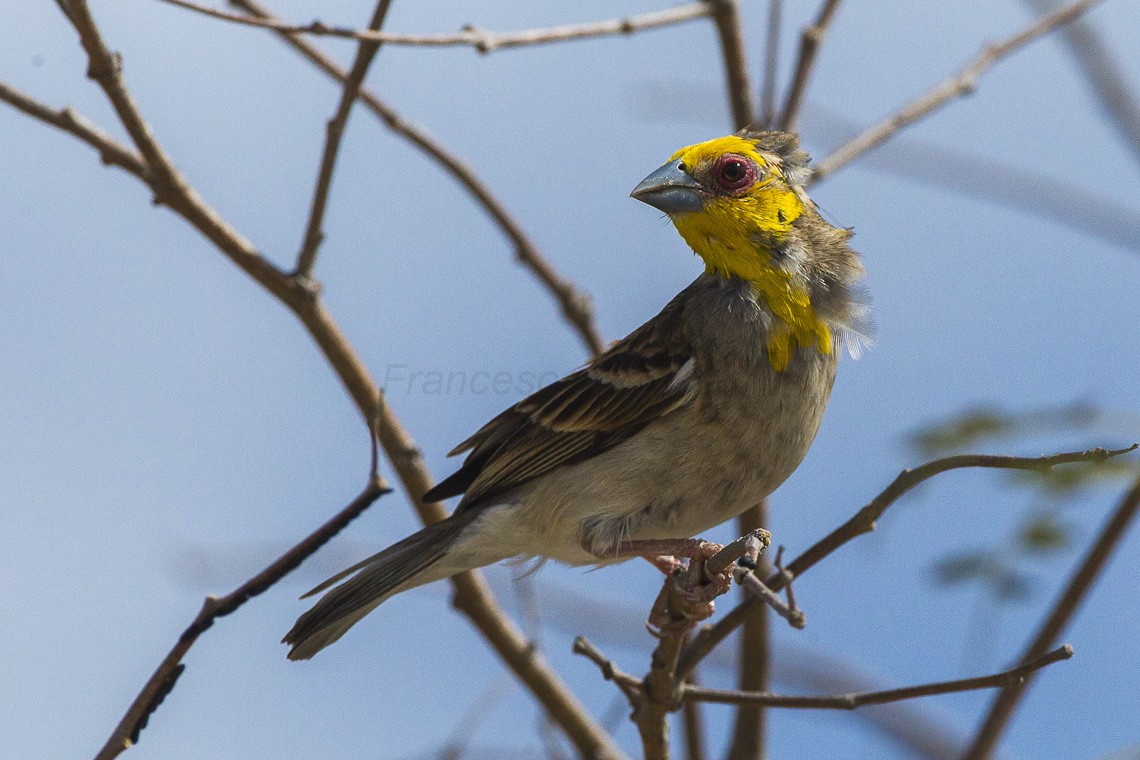Sakalava Weaver
A species of Typical weavers Scientific name : Ploceus sakalava Genus : Typical weavers
Sakalava Weaver, A species of Typical weavers
Botanical name: Ploceus sakalava
Genus: Typical weavers
Content
Description General Info
 Photo By Francesco Veronesi , used under CC-BY-SA-2.0 /Cropped and compressed from original
Photo By Francesco Veronesi , used under CC-BY-SA-2.0 /Cropped and compressed from original Description
The adult male has a yellow head and upper breast during the breeding season, with a pale grey belly and light and brown wings with white wing-tips. The male has distinctive red eye-rings and silver bill extending with a 'V' shape into the forehead. The non-breeding male has a dark brown head and pale grey breast, flanked with white. The female has the appearance more of a house sparrow with pale almost white breast and duller slightly pink bill. The female also has a red eye-ring and sometimes small flashes of red around the eye. 
Size
15 cm
Nest Placement
Tree
Feeding Habits
Sakalava Weaver principally consumes grains, incorporating rice, with insects and spiders forming a regular part of the diet, especially during the rearing of chicks. It forages on tree branches and on the ground for scattered seeds or for rice. Sakalava Weaver also feeds on Alluaudia flowers.
Habitat
The habitat of sakalava Weaver predominantly consists of open landscapes in drier lowland regions. This species typically thrives in areas impacted by human activity, such as lands cleared for settlement. Sakalava Weaver is also known to inhabit environments characterized by spiny bush vegetations and dry deciduous forests. Generally, the bird favors environments with specific vegetation that can support their nesting and feeding requirements.
Dite type
Granivorous
General Info
Feeding Habits
Bird food type
Behavior
Like in other true weaver birds, the roofed nest is woven from strips of grass leaf, but the sakalava weaver also uses strips of palm fond, or thatching and weaving materials collected in villages. The top is woven directly around a branch or it is attached from a short woven stalk. It is shaped like a retort, with a pear-shaped nesting chamber and a long entrance tunnel hanging from the top. The fabric is thin but dense, although less so with the tunnel, that may be slightly transparent and which may also be somewhat wider at both ends. 
Distribution Area
It is found in small flocks. Its natural habitat is the dry lowland forests and scrubland of the north, west and south of Madagascar. Its natural habitats are subtropical or tropical dry forests and subtropical or tropical dry shrubland. 
Species Status
Not globally threatened.
Scientific Classification
Phylum
Chordates Class
Birds Order
Perching birds Family
Weavers Genus
Typical weavers Species
Sakalava Weaver